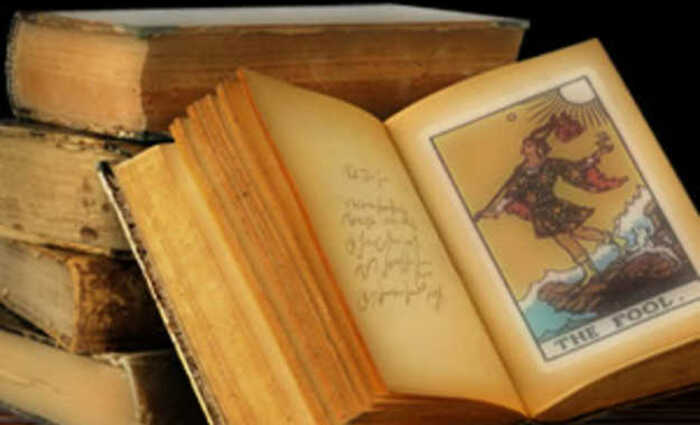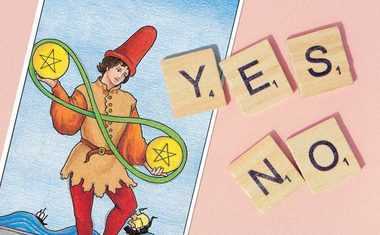
Christian Magic
Did organized religion ever practice magic?
2. Christian magic
During the first few centuries of the common era, magic was identified with the paganism of the Greco-Roman world that gave rise to Christianity. These rival religions were competitors and paganism was seen as a threat. Efforts focused on suppressing the power and beliefs of paganism.
But the problem posed by the suppression of the pagan religions was a subtle one. It was a question of authority, not of the underlying belief in superhuman knowledge and power. The seer or diviner was still respected in late Roman times and the Old Testament prophesies had to be preserved so it was a matter of eliminating the competitor without dismissing the magic. "It was a matter of setting aside these multifarious and vigorous competing persons and objects without dispelling the emotions and expectations which sustained them." (Flint 1991). The temporal response to paganism was a simple one. The temples and priesthoods were demolished (Peters 1978).
But the intellectual challenge was a more difficult one. A careful distinction had to be drawn between miracle and magic. The solution was to distinguish between effects resulting from a ritual invoking and binding demons (i.e., necromancy) and miracles resulting from the power of angels and God. The magical effect was the same, but the authority was different.
The distinction is more subtle than it appears on the surface. Underlying magic is a belief in spirit or pneuma as the glue pervading the universe (Couliano 1987). Augustine establishes the legitimacy of angels by referring to the Platonic theory of daemons, the powers of the upper heavens and identified with the stars and heavenly bodies. Thus, angels and demons have the same nature, a more purified form of pneuma or spirit. This Platonic (and Neoplatonic) concept underlies the theory of magic: a pure center or heart is connected to this spirit and through this connection can perform magic (Couliano 1987). Thus, magical rituals are almost always associated with ascetic preparations, chastity, freedom from carnal thoughts, etc. in order to connect to the pneuma.
Magic and miracles had the same theoretical foundation and therefore the reality of magic could not be dismissed without giving up miracles. It was a matter of how the power implicit in the pneuma was elicited and by what authority. This distinction of authority carries over into later hagiography. The lives of the saints document a continuing record of people falling ill and summoning local magicians to no avail. But then a saint or a saint's relic or a visit to a saint's church heals them. There is no doubt of the reality of the cure, but whether it comes through the church or through demons is the telling point.
Ritual magic in the form of necromancy was universally condemned, based on early writers such as Augustine and John Cassian (Pichery 1958). Where magic and religion overlapped, the distinction of authority was evoked. Where pagan ritual competed with Christian liturgy, paganism was condemned and died. Ritual magic survived but only in new Christian guises.
One thing is abundantly clear: magic in the late medieval period was not a relic of paganism (Bossy 1985). Paganism no longer existed (Fabvre 1982). Even among the rural populations, the practitioners considered themselves Christians. Popes consulted diviners and priests practiced sexual magic (Brooke and Brooke 1984) but certainly didn't consider themselves as pagans. Dualist heretics, such as the Cathars, did not consider themselves as the remnant of an ancient pagan faith. Rather, they loudly acclaimed themselves as the only real adherents to Christianity. After the 12th century the most influential "Magi" were Christian intellectuals. Magic in Europe had developed a thoroughly Christian mentality (Jolly 2002).
The Penitential literature makes it clear that rural people preserved some pagan practices. But the important point is that the practices were no longer seen as pagan. If the people thought of themselves as pagan, they would not be going to confession where the priest would ask about such practices (McNeill and Gamer 1938)! The people were Christians though some of their traditional practices undoubtedly derived from earlier pagan systems.
Indeed, many aspects of folk magic sound strangely like pagan customs. For example, offerings were left at crossroads to ensure fertility and good harvests and traditional funeral services involved loud screaming and wailing to ensure that the spirit of the dead did not return to haunt the family. The practices themselves probably contain an element derived from an earlier paganism. But the people did not think of themselves as secret practitioners preserving an ancient form of paganism. The people thought of themselves as Christians and the priest would instruct them to drop their "superstitions". The rituals were pagan relics, but that wasn't the intent of the practitioners (Bossy 1984). They thought of themselves as Christians but still avoided the number 13 and wouldn't "step on a crack". So what was preserved orally was not a deep ancient understanding of the universe that had been deliberately suppressed by the church. What was preserved was an ancient set of traditions in a new Christian culture.
The picture is somewhat complicated by the fact that we are not what aspects of folk magic are actually pagan relics and what aspects are more recent Christian inventions. For example, it was once thought that Carnival was a relic of the pagan Saturnalia. Modern scholarship (Bossy 1984) indicates that Carnival was a Christian innovation that began about 1200 C.E.
On the other hand, there are some clearly Christian innovations that bear an uncanny resemblance to pagan culture. The veneration of the saints led to a proliferation of relics and icons (Jolly 2002). The Church affirmed the piety of the individual who adorned the icon with flowers, lit a candle, and knelt in prayer. But only a fine distinction separates this Christian ritual from the magical invocation of a pagan idol. "Thus, the boundary between magic and religion is obliterated or crossed so frequently as to make it impossible to tell where one leaves off." (Jolly 2002).
By the 15th century, paganism no longer existed in Italy or most of Europe. Some pagan relics may still have been practiced by the Christians. Some Christian inventions resembled pagan practice. But the magic that pervaded Italy and formed an integral part of culture within which the Tarot was developed was Christian magic. So it is to Christian magic that we must look if we are to find any magic in the Tarot.



